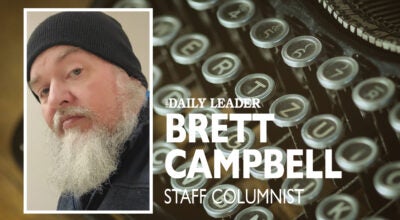Public retirement plan pressure won’t end soon
Published 7:28 pm Monday, September 24, 2018
Mississippi’s public pension system got a particularly unwelcoming reception last week when its leaders told legislators to budget for higher pension contributions.
But what lawmakers may not have heard at their budget hearing, unless they were listening carefully, is things are likely to get worse. That’s because many participants in the financial market believe investment returns will be lower in the future than they have been in the past.
If the board of the Public Employees Retirement System makes further adjustments to its projections based on that view, those projections will show more money is needed in the future to pay off benefits that employees and retirees have already earned. And that could lead back to more demands on taxpayers.
The retirement system already voted in June to start requiring employers to pay 17.4 percent of a worker’s salary to the system beginning July 1, 2019, up from 15.75 percent now.
The pension plan had $28.2 billion in assets as of June 30. That sounds like a lot. But last year, actuaries projected that the system had about $17 billion less than would be needed. With only enough money on hand to pay about 61 percent of liabilities, directors decided they had to ask for more.
The increased contributions equal about $100 million a year, with about $75 million due from state agencies, community colleges, universities and public schools. Lawmakers traditionally budget money to pay for those pension contributions for all those agencies. The remainder would come from local governments and other entities, such as public hospitals. Cities and counties have already been setting aside money for higher contributions in their budgets, which begin Oct. 1.
Though they’ve had months to absorb the news, lawmakers were clearly cranky about the increase.
“When we talk about employer contributions, I don’t think it needs to be forgotten that at the end of the day, the employer is the taxpayer,” said House Speaker Philip Gunn, a Clinton Republican. “So when you’re asking for an increase, you’re asking for the taxpayers to step up and pay more.”
Lawmakers also said they felt like former Executive Director Pat Robertson had promised them as late as last year that all was well with the retirement plan, and that they had been promised that no additional contribution increases would be needed after the employer rate went to 15.75 percent in 2013.
“We’ve very sympathetic to the cost for employers, but we have to do what we have to do,” new executive director Ray Higgins told lawmakers.
Chief Investment Officer Lorrie Tingle told legislators that the system is under pressure from the financial community to reduce its projection of what it will earn in the future. That’s a bedrock part of how accountants figure out how much needs to be collected now to cover benefits. PERS used to assume it would earn 8 percent a year, but in 2015, it cut that level to 7.75 percent.
That reduction contributed to today’s shortfall, although the biggest component of the unfunded liability stems from investment losses since 2009, according to a January analysis by the pension system’s actuary. That makes up 38 percent of the shortfall. Pension system officials have long blamed a 1999 benefit increase agreed to by lawmakers as the biggest cause of problems, but the analysis shows that’s no longer true.
But even though the retirement system has made an 8.55 percent annual return over the last 30 years, lowering the projected future rate of return will make projected future shortfalls bigger. And that could lead to something more serious than cranky lawmakers.
Jeff Amy has covered politics and government for The Associated Press in Mississippi since 2011.





